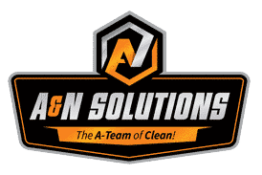Pressure washing professionals face many hazards in their daily tasks, which is why the Occupational Safety and Health Administration (OSHA) sets strict safety standards for them. These guidelines include mandatory personal protective equipment (PPE), specialized training, and safety practices to ensure workers’ well-being. Ensuring compliance with OSHA standards is crucial for pressure washing companies operating in Missouri.
PPE is a fundamental component of OSHA’s safety regulations. Pressure washing professionals must wear eye protection, gloves, and appropriate footwear to guard against high-pressure water jets and chemical exposure. Training programs are equally important, covering the correct use of equipment and emergency procedures.
In Missouri, specific local safety practices complement federal OSHA standards. Employers must stay informed about regional guidelines to maintain safe working conditions. By adhering to these regulations, companies not only protect their employees but also avoid legal issues and fines.
OSHA Standards for Pressure Washing in Missouri
OSHA has set specific safety standards for pressure washing professionals in Missouri. These guidelines cover personal protective equipment (PPE), mandatory training and certification, and essential safety practices.
Personal Protective Equipment (PPE) Requirements
Pressure washing can be risky without proper PPE. OSHA mandates the use of specific equipment to protect workers. Required PPE includes:
- Goggles or face shields: Protects eyes from high-pressure water and debris.
- Gloves: Prevents injuries from sharp surfaces and chemicals.
- Waterproof boots: Reduces the risk of slipping and keeps feet dry.
- Protective clothing: Shields skin from hazardous chemicals and water jet injuries.
These items are essential to minimize the risks associated with high-pressure water and chemical use.
Mandatory Training and Certification
OSHA requires pressure washing professionals in Missouri to complete specific training. This training focuses on:
- Equipment Handling: Instruction on safely using pressure washers.
- Chemical Safety: Proper handling and storage of cleaning chemicals.
- Emergency Procedures: Steps to take in case of an accident or spill.
Training must be done by certified instructors. Workers need to renew certifications regularly to stay compliant with OSHA regulations.
Specific Safety Practices for Pressure Washing
OSHA has outlined several safety practices for pressure washing in Missouri:
- Site Assessment: Inspect the area for hazards before starting work.
- Safe Distance: Keep bystanders at a safe distance to avoid accidental injuries.
- Equipment Check: Regularly inspect and maintain pressure washers to ensure they are in good working condition.
- Controlled Environment: Use barriers or signs to mark the work area and warn others of potential dangers.
These practices are critical to maintaining a safe work environment and preventing accidents.
Implementation of OSHA Guidelines
Implementing OSHA guidelines involves crucial steps including performing safety audits and inspections, and maintaining proper record-keeping and documentation.
Safety Audits and Inspections
Pressure washing professionals must regularly conduct safety audits and inspections. These audits ensure all safety protocols are being followed. Regular inspections help in identifying hazards and implementing corrective actions promptly. Inspections should include checking pressure washing equipment, verifying PPE compliance, and ensuring that employees are trained on handling emergencies.
A checklist for inspections might include:
- Correct use of PPE: Helmets, goggles, gloves, and boots
- Equipment Maintenance: Ensuring no leaks or malfunctions
- Work Area Safety: Proper signage and barriers
Safety audits should be a scheduled part of the work routine. Random inspections can further ensure compliance.
Record-Keeping and Documentation
Record-keeping is essential for demonstrating compliance with OSHA regulations. Accurate records include training logs, inspection results, and incident reports.
Training logs must show:
- Dates of Training Sessions: When training was conducted
- Content Covered: Topics included in the training
- Attendee Signatures: Employees who attended
Documentation of inspections should outline:
- Date and Time: When the inspection took place
- Inspector’s Name: Who conducted the inspection
- Findings: Details of any hazards and corrective actions taken
Incident reports should document any accidents or near-misses. Maintaining these records helps in continuous improvement and regulatory compliance.
